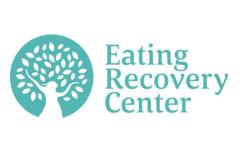- Calls to this hotline are currently being directed to Within Health, Fay or Eating Disorder Solutions
- Representatives are standing by 24/7 to help answer your questions
- All calls are confidential and HIPAA compliant
- There is no obligation or cost to call
- Eating Disorder Hope does not receive any commissions or fees dependent upon which provider you select
- Additional treatment providers are located on our directory or samhsa.gov
Eating Disorder Treatment in North Dakota
Eating Disorder Centers in North Dakota
Even with a relatively small population, North Dakota still feels a big impact from eating disorders. Conditions like bulimia nervosa, anorexia nervosa, and binge eating disorder will impact just under 67,000 residents at some point in their lifetime, while the state sees an annual economic cost of more than $150 million related to the conditions, their treatment, and related loss of productivity.1
Finding appropriate treatment for eating disorders is paramount for reversing these numbers and helping people recover both physically and emotionally from these mental health concerns.
Possible Virtual Options
In addition to in-person options, virtual only eating disorder treatment programs may be available in North Dakota to those who would prefer to receive help remotely or to those who may have difficulty accessing a treatment center. Virtual programs are completed entirely online—therapy sessions are conducted remotely, vitals are tracked and sent to your clinical team, and some programs even provide pre-prepared meals directly to your North Dakota residence.
If you qualify for an intensive outpatient or partial hospitalization program but can’t find a center in ND that is convenient and suited to your needs, a virtual program may be the best option.
Virtual Eating Disorder Treatment
Finding in-person eating disorder treatment in North Dakota can be difficult. There are few programs in the state, and many people live far from the major metropolitan areas that primarily host them.
In these cases, virtual eating disorder treatment may offer a better solution. The programs require only an internet signal and a connected device, which extends access to nearly everyone, regardless of location, transportation options, or physical or mental health concerns.
Extending the network through virtual programs can also help connect patients in North Dakota to others who are struggling outside of their immediate area, creating more opportunities for group therapy sessions, support group meetings, and other important types of care. Similarly, it invites physicians and specialists from further away, making access to treatment, like nutritional counseling and specialized care, more accessible.
While virtual eating disorder treatment is still relatively new, studies have already shown that it can be just as effective as in-person care in many cases, making it a great option for anyone looking for a more convenient approach to care.2
Additional Eating Disorder Resources in North Dakota
While there are relatively few in-person eating disorder centers in North Dakota, the state has several other programs that can assist those in need of help.
The North Dakota Department of Health offers general information, educational materials, and additional resources about eating disorders, their symptoms, and how to find care. The agency can also help with the coordination of care and arrange referrals for more intensive care, such as residential treatment or a partial hospitalization program.
Certain residents will also qualify for North Dakota's Medicaid program, which offers a number of behavioral health services. The program may cover certain types of care, including individual and family therapy, medication management, and specific treatments for disordered eating behaviors. Some frequently co-occurring conditions, like substance use and anxiety disorders, may also be covered.
Choosing the Best Eating Disorder Centers in North Dakota
Working with a qualified and caring mental health professional is one of the most important aspects of eating disorder recovery. Even if therapy services are limited, it's still important to seek treatment thoughtfully.
Ensuring programs or practitioners work with your specific health insurance is essential. You should also familiarize yourself with the details of your healthcare plan, as many will only cover certain types of care for specific conditions and periods of time. While this can be frustrating and confusing, it can ultimately lead to fewer potentially destabilizing surprises later on.
Other important considerations include:
- Which levels of care a program provides.
- How a program determines progress toward recovery.
- How long a center or practitioner has been working with eating disorders.
Regardless of where you start, however, the most important step is starting itself. It can turn low self-esteem and physical and mental pain into a future of healthier and happier outlooks.
Reference List
- Social & Economic Costs of Eating Disorders in North Dakota. (2018). Harvard University. Accessed June 2025.
- Steiger H, Booij L, Crescenzi O, Oliverio S, Singer I, Thaler L, St-Hilaire A, Israel M. (2022). In-person versus virtual therapy in outpatient eating-disorder treatment: A COVID-19 inspired study. International Journal of Eating Disorders; 55(1):145-150.





